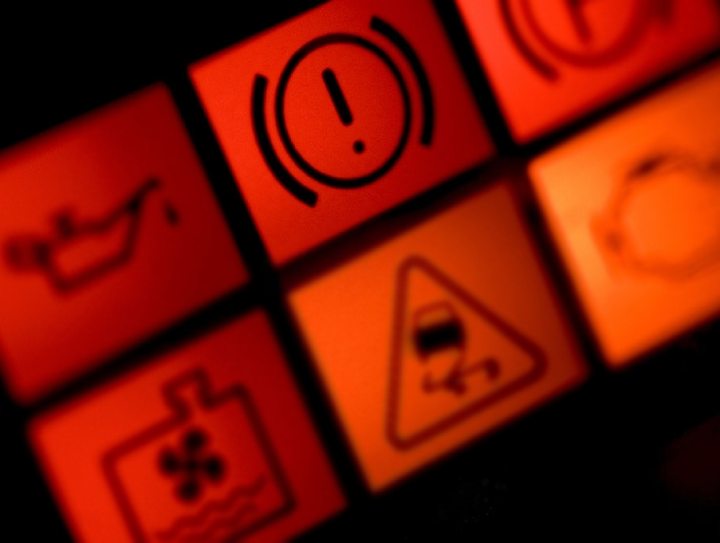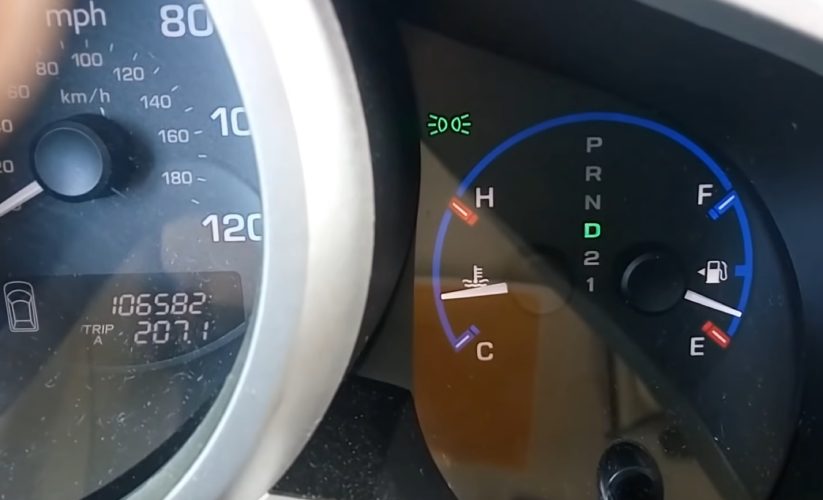While some warning lights on your dashboard can be ignored, your battery light is certainly something you should pay attention to when this turns on. The role of a car battery is to start the engine and aid the alternator in supplying power to electrical components.
While a dead battery will have the light stay on at all times, there are situations where the car battery light will turn on only when accelerating.
Here’s why your battery light comes on when accelerating
This means the alternator’s regulator is not able to supply enough power to the car while accelerating. A drop in power can result from a loose connection, alternator or voltage regulator going bad, or perhaps a slippery belt.
I am going to cover every scenario, as well as other reasons why you might get this warning light only when accelerating. I will start with the most likely one, based on my vast experience of being a car mechanic.

1. Loose wire
If you have recently changed your car battery or alternator, there is a small chance that your mechanic did not connect things properly.
If you are lucky, your problem is a loose connection that can be fixed by yourself. While this problem might cause the warning light to stay on at all times, you can’t go wrong by checking the wires to the car battery and alternator.
2. Alternator belt starts slipping at higher RPM
One common problem which will make your battery light flicker while accelerating is a slipping belt, also known as a serpentine belt.
Depending on the age, the belt might have deteriorated and started sleeping under a heavy load. This will cause the alternator to lose grip and free-wheel when you are accelerating and then catch up.
You can perform a visual inspection which will let you know if there are any cracks too. While at it, you might want to check for any misalignments as well as how tense the belt is.
A loose belt will indicate that it needs replacing as soon as possible, as it can break and have your car stalled.
The cost of replacing your alternator belt can range from $130 – $200, depending on how easy it is for the mechanic to access it.
3. Faulty belt tensioner/pulley
A bad pulley can wear your belt a lot quicker, affecting the performance and functionality of your car or truck.
If you give it a visual inspection while the engine is stopped, you should see if the tensioner shows any signs of damage or is misaligned.
If you start your car, you can check if the tensioner is oscillating or making any squeaking or rattling noise.
A faulty pulley will definitely cause a loss of voltage when accelerating the car. While the part on its own will set you back $40-$60, the labor can cost you around $120-$150.
4. Failing alternator
In a car, the alternator is responsible for generating electricity for the battery to recharge and supply other electrical components. However, a bad alternator will not supply enough electrical energy, especially under heavy load.
Depending on the age of your car, it is worth checking the state of your alternator as this can be the main issue. Usually, an alternator will last around 10 years or more, depending on the make and model of your car.
Here is a list of signs that a bad alternator will show:
- The brightness of your lights will change due to inconsistent voltage supplied by the alternator
- Some car accesories will stop working or operate slower e.g. your windoes or seats
- Your battery is dead as a result of not being recharged by the alternator
- You might hear a whining noise coming from under the hood
- If you can smell burning wires through your air vents, your alternator is malfunctioning
If you experience any of these signs, I recommend taking your car to a mechanic for a proper inspection. Otherwise, you risk breaking down on the road. Your only option will be to get towed to a repair garage.
I don’t recommend changing an alternator on your own, as this procedure requires advanced knowledge and is often done by an experienced mechanic.
The average price for having your alternator replaced can range from $500 to $900 for labor and parts in the US.
You can also have your alternator repaired by using a repair kit which will cost around $50. However, if you plan on keeping the car for longer, it is always recommended to replace the unit.
5. Failing voltage regulator
A voltage regulator is responsible for maintaining an even flow of electricity to all your car components such as stereo, headlights, electric windows, and seats.
The voltage regulator will usually last the car’s life, so it is unlikely that this causes your problem. However, it is an electrical component and we all know that sometimes things just break.
When the regulator starts to fail, it might not keep up with the car’s demand for electricity when accelerating. However, when driving normally or idling, there might be no low voltage signs if the regulator is just beginning to fail.
Here is a list of signs that your voltage regulator is failing:
- Inconsistency in engine performance
Intermittent acceleration and even engine stalling are common signs that your voltage regulator is burned, as it cannot handle the voltage put out by your alternator.
- Dim or pulsing lights
If you notice your lights become dimmer, your voltage regulator might start to show signs of damage. You might get a battery warning light on your dashboard, indicating that there is insufficient power supplied to your electrical components.
- Dead battery
When the regulator has failed, your alternator will stop charging the car battery. Even if you jump-start your car, you will find out that the car will lose power soon and stall.
In this case, I suggest getting your car to a mechanic as soon as possible for inspection. He will be able to replace the regulator and have your car back on the road as soon as possible.
Unfortunately, replacing a voltage regulator can be costly, as the part itself will start at around $350, and the labor from $200.
What should you do if the battery warning light comes on?
Whenever you get a warning light on your dashboard, you must drive your car home or straight to a mechanic for inspection. Otherwise, you risk having your car stall while driving and even damage other components.
You should turn off your A/C, radio, headlights and reduce the use of any other electrical equipment such as windows or heated seats.
While not so urgent as a constant battery light on your dashboard, this still indicates a problem with your car, and you should get it fixed as soon as possible.
Final thoughts
As you can see, only a couple of components could cause this warning light to come on. Therefore you should be able to identify the failing part easily.
If you have not worked on a car before, I suggest giving a visual check and ensuring no loose connections. Anything more than this, and you should be having a car mechanic inspect and fix your problem.
Sources
Every since I was a little boy, I can remember spending the afternoons in my dad’s repair shop. I got my first car at 16 and it was the best feeling ever!
I have contributed to various automotive publications but decided it’s finally time to settle for something constant.









